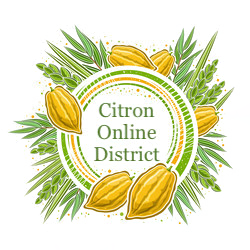Key Links:
Lincoln-Douglas Quick Guide for Judges and Competitors (Google Doc)
For more guides and teaching resources please join National Speech & Debate Association
What is Lincoln-Douglas Debate?
LD’s lineage dates back to the debates between Abraham Lincoln and Stephen A. Douglas during the 1858 Illinois senatorial election. The series of debates were largely focused on addressing slavery’s extension into the territories. Debaters today evaluate moral and ethical issues presented in the resolutions through philosophical thought experiments. Sometimes the journey to the objective is more important than reaching it. Do the needs of the many outweigh the needs of the few? Is it ever an acceptable amount of harm we can tolerate in a society? These are the kinds of questions that await you.
Example Topics (changes every 2 months)
Resolved: Civil disobedience in a democracy is morally justified..
Resolved: The United States should legalize the sale of human organs.
Traditional Case Structure
(Optional) Opening quote from a philosopher
(Optional) Topicality/Definitions.
(Optional) Lay the ground work of the status quo. What is and is not happening
VALUE: These are high level moral ideas. Happiness, Justice, Suffering, Utilitarianism, Consequentialism, etc.
VALUE CRITERION: The measurement which indicates that your value is being met. Ex: if my value is Justice then my value criterion could be a jury of my peers.
Contentions: This is where facts, figure, statistics meet morality
Sub point A:
Link to resolution
Harms/Impacts
Solvency/link to value criterion
(optional) Sub point B
Speeches and Speech Times
Each competitor can take 4 minutes of in-round preparation time in 30 second blocks
Affirmative Constructive (6 minutes)
Affirmative case presentation
Negation-Affirmation Cross Examination (3 minutes)
Negative questions the affirmative for clarification and dismantlement
Negative Constructive (7 minutes)
Negative case presentation and/or refutation of the affirmative
Affirmation-Negation Cross Examination (3 minutes)
Affirmative questions the negative for clarification and dismantlement
First Affirmative Rebuttal ( 4 minutes)
Refute the points of negation, reaffirm your case, refute the negative case, narrow the scope of the arguments and establish the voting issues, no new contentions
Negative Rebuttal (6 minutes)
Refute the affirmative case, advocate the negative case, narrow the scope of the arguments and win the voting issues, no new contentions
Second Affirmative Rebuttal (3 minutes)
Synthesize the round, advocate for the affirmative case over the negation, and win the voting issues, no new evidence
Questioning
LD Cross-Examination (CX) is very traditional in that the debater asking the questions is in control of the examination period and the opposition cannot ask any questions outside of clarifying the examiners question. To put it bluntly if it is the Aff-Neg CX only the Aff should be asking questions and vice versa. It is not unusual for a debater to be satisfied with an answer and interrupt their opponent so they can move onto other material they would like to address. This is the most combative phase of any debate but there is an amount of mutual respect and sportsmanship expected. For many this is where speaker points are decided.
Key Terms
Value: A value (V) is the most abstract piece of the LD case. These can feel nebulous, non-tangible, but offer the moral imperative for the round. Values include; happiness, justice, life, autonomy, etc. For example, for the above resolution the negative Value will be “Justice”.
Value Criterion: In many ways the value criterion (VC) can be considered a metric to measure the existence of, and thus a prerequisite to, the V. For this reason it is imperative that debaters integrate the VC in their contentions. It is common for VC to be structured as a verb + noun. Examples include: protecting life, minimizing suffering, creating equality, etc. For the example above, the Negative Value Criterion will be, “a jury of your own peers” would be the best metric for Justice.
Framework: Framework is the combination of V + VC = framework. An example combination would be a Value of Justice and the Value Criterion of being tried by a jury of your peers. A debater might reference the “framework” to reference the moral imperative. The existence of the process of “a jury of your own peers” is the real world measure in this example that Justice exists in the world proposed. This is then supported with contentions that contain evidence to support how well the VC acts as a metric and functions as a proof for the existence of the V. The inverse being no jury = no justice.
Contentions: These are the complete packaged arguments that have a direct link to the resolution, addresses an issue, and leverages the moral imperative of the framework as a reason to vote. Continuing with the V+VC example from before but within the context of a resolution. A negative contention could read; “a jury of your peers is the best way to address dynamically local social issues which otherwise would not be properly addressed and lead to unjust/false imprisonment”; followed by evidence which supports the claim. Contentions should be numbered for easy reference such as 1, 1a, 1b, 2, 3a, 3b. This allows both the judge and the opponent to flow the debate more easily. If an opponent did not address one of the numbered contentions the debater is encouraged to call this out to the judge during their rebuttals, this is known as “dropping an argument”.
Impacts/Voter Issues: These are the reasons that a judge votes for a given team. Debaters will present what hypothetical worlds could exist if a judge were to vote Aff/Neg and this choice is how round winners are determined. This is normally done throughout the rebuttals.
Flow: This term is in reference to the notes taken during a debate that comes from the “flow” of arguments. A judge is encouraged to write down every argument/contention of each team and gauge whether the opposing team addressed/clashed with their opponents contention.
Clash: Clash happens when there are two proposed positions that are in direct conflict with one another. A good debate should have plenty of clash, students are encouraged to directly attack the contentions, values, value criterion and framework of the opposition, not just defend their position.

